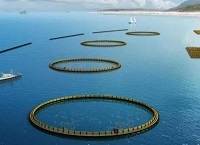To provide scientific reference for illuminating the pollution status of aquaculture in China, based on the existed pollution discharging coefficients and breeding yield of 2014, we calculated and analyzed the total discharge amount of major aquacultural pollutants.Due to the lack of correlation data, this paper chooses the year of 2014 as the year of measurement. The results showed that the main pollution discharge amount of total nitrogen, ammonia nitrogen (NH3-N), total phosphorus, chemical oxygen demand (COD), copper and zinc in aquaculture in 2014 was 68.342 × 104, 16.660 × 104, 13.769 × 104, 164.154 × 104, 253.746 and 729.842 t, respectively. COD and NH3- N accounted for about 7% of the total wastewater amount in China.. Due to differences in yield, breeding way and variety, pollutant discharge amount from freshwater aquaculture was much higher than that of marine aquaculture. In addition, to promote the sustainable development of aquaculture in China, we put forward suggestions such as controlling freshwater aquaculture production, adjusting breeding way, developing healthy and ecological breeding technology and promoting research on related systems.
